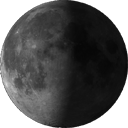 The next couple of weeks provide a great opportunity to track down three of the brightest asteroids.
The next couple of weeks provide a great opportunity to track down three of the brightest asteroids.
Image: Starry Night Software
Have you ever seen an asteroid? These space rocks, though small in size, are very numerous, but very few amateur astronomers have ever seen one. The next couple of weeks give stargazers an opportunity to view three asteroids in one night: Flora, Juno, and Iris.
The asteroids Juno, Flora and Iris were among the first eight space rocks ever to be discovered. Juno was the third asteroid discovered, in 1804, very soon after Ceres — the largest asteroid — in 1801 and Pallas in 1802. It was discovered by German astronomer Karl Ludwig Harding, and named after Juno, the highest of the Roman goddesses.
At present Juno is located in the western part of the constellation Aquarius, and is about magnitude +8.6 on the scale used by astronomers to measure brightness of space objects. (The lower the number, the brighter the object, with negative numbers denoting exceptional brightness.)
via See Three Asteroids in the Night Sky This Month: Scientific American.



